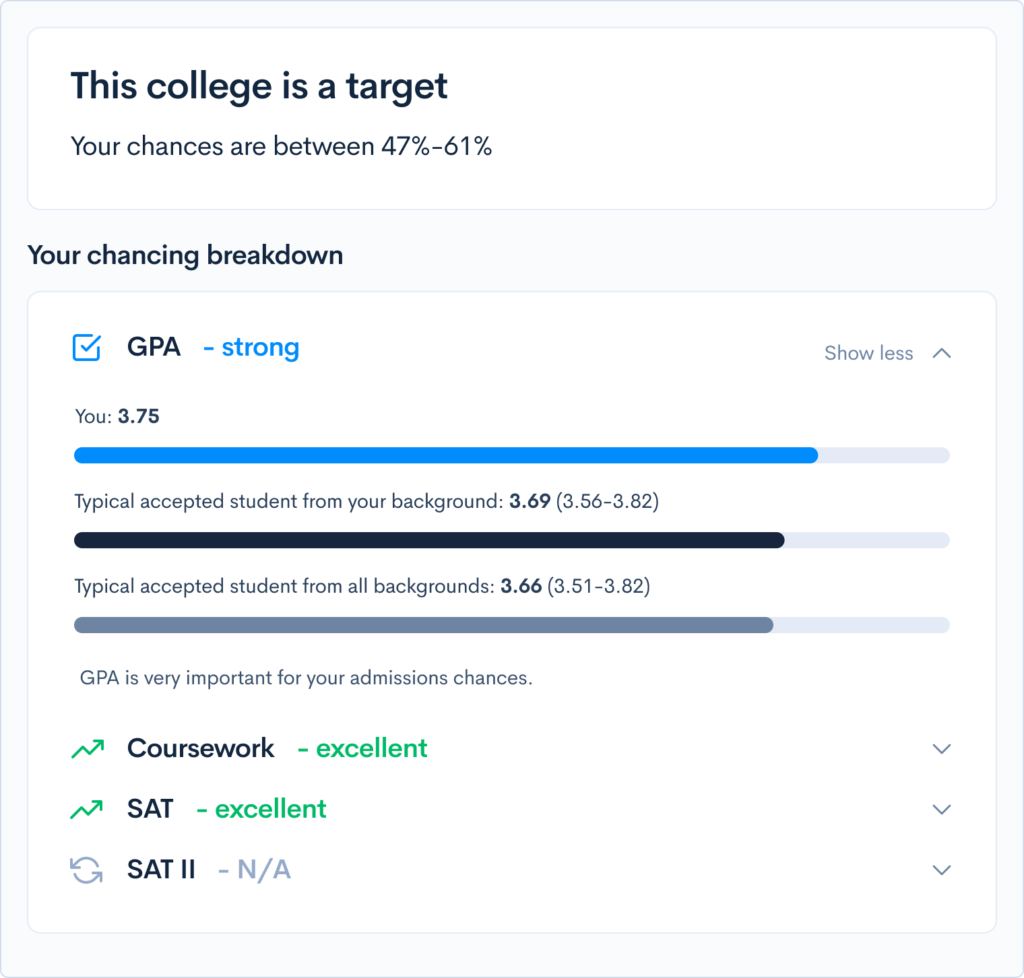List of States that Require the SAT
For many college-bound students, taking the SAT is a pivotal part of the college admissions process. For some students in certain states, the SAT also plays a considerable role in their high school careers, as it has replaced other standardized tests used to measure aptitude and student achievement. Replacing other state-administered standardized tests with the SAT is a rather new phenomenon; it was only in 2010 that the College Board (the group that administers the SAT) introduced a program called SAT School Day, which was designed to increase access to the exam by offering it on a weekday in school. However, it wasn’t until the redesign of the SAT to make it align with common core standards in 2015-2016 that the SAT gained momentum for use in high schools. There are a variety of reasons why some states have opted to use the SAT in lieu of other standardized tests, such as: In 2019-20, 11 states used SAT School Day to measure student achievement under the Every Student Succeeds Act. In addition to some of the obvious benefits of states requiring the SAT, there are a handful of other under-the-radar advantages. The most notable benefit of taking a state-required SAT is that the state pays for the exam—and the four free score reports that come with it. This reduces the financial burden on students and their families, provides the exam to students who might not be able to afford it, and makes retaking the exam more economically palatable. According to research from the College Board, 63% of students increase their SAT test score when taking the exam more than once. High schoolers building attention-grabbing college profiles have busy schedules—studying for high-level courses, participating in extracurricular activities, working after-school jobs, and maintaining a social life are all time consuming. State-required SATs allow a student to take the exam on school time and frees up a weekend day. Sitting for a state-required SAT allows students to polish their standardized test-taking skills on the state’s dime. Whether you’re planning on taking the SAT a second time or the ACT, taking any standardized test provides valuable firsthand experience. Students using the School Day SAT as preparation for taking the exam a second time can also stack the dates relatively close together, so that the experience is fresh in their mind when retaking the test. For example, the late March and April SAT School Day dates are excellent preparation for the May SAT. Keep in mind, however, that you should take this in-school SAT as seriously as any other, as it will be part of your official testing record, and counts towards your total number of SATs taken. Many students debate whether they should take the SAT or the ACT—most students are better-suited to one exam than the other. Getting to take the SAT for free allows a student to make an educated decision on whether the SAT or ACT is the ideal exam for them. When you take the SAT has no effect on your score. A student’s SAT score is solely based on how they perform on the exam and is not impacted by the performance of other students. In fact, the SAT doesn’t score on a “curve” at all, rather, they use a process known as “equating.” Equating is a statistical process used to ensure standardized exam scores are fair for all test takers. Equating does not consider factors such as when you took the SAT or how other students performed on the SAT; what it does figure for is the difficulty of the version of the SAT taken compared to other versions of the SAT. This is to ensure no student is advantaged, or disadvantaged, by taking a particular exam. Learn more about how the College Board scores the SAT in our article, How Does the Curve Work for the SAT? Below are the states that require the SAT to graduate high school. Colorado high school juniors have been required to take the SAT since the 2016-2017 school year and sophomores are administered the PSAT. In the 2015-2016 academic year, taking the SAT became a graduation requirement for Connecticut high schoolers, replacing the Smarter Balanced Assessment Consortium (SBAC) exam. Delaware has provided the SAT free of charge to students since 2011, but in 2016, it replaced its Smarter Balanced Assessment exam with the SAT. Idaho students must take either the SAT or ACT before the completion of 11th grade—the state offers the SAT for free to high school juniors and the PSAT for free to sophomores. As of 2017, all Illinois juniors are required to take the SAT. The SAT is a requirement in the state of Maine—the state still provides the exam for free to third-year high school students. Michagan moved away from the ACT and began administering the SAT in 2016. In 2016, New Hampshire transitioned from using Smarter Balanced exams to the SAT. All Ohio juniors are required to take either a state-funded ACT or SAT exam. In 2018, the SAT and PSAT became graduation requirements in Rhode Island. The SAT is mandatory for all West Virginia 11th graders with the exception of students with cognitive disabilities who are given the West Virginia Alternate Assessment. There are some states that don’t require the SAT but still provide it for free to students. Washington, D.C., does not require high schoolers to take the SAT, but it has provided the exam—as well as the PSAT—for free since 2013. Oklahoma provides funding for every public school junior to take either the ACT or SAT for free on a specific testing date. South Carolina does not require either the SAT or the ACT; however, it provides both exams to 11th graders at no cost. All Tennessee high school students in 11th grade are required to take either the SAT or ACT—school districts are given the choice of which test to provide or may offer both exams. Selective colleges use a metric called the Academic Index (AI) to represent the strength of applicants’ grades and test scores. If your AI is too low, a school may not even review the rest of your application. That’s why it’s so crucial to have a strong academic profile (including your SAT score!). We’ve made it easy to understand the impact of your SAT score by creating a free Admissions Chances Calculator. This calculator will let you know how your score stacks up against other applicants’, and give you tips on improving the rest of your profile, including grades and extracurriculars. You can also search for schools based on preferences like location, major, cost, and more. We highly recommend giving it a try! What’s Covered:
Why Do Some States Require the SAT?
Benefits of Taking the SAT in School
Free Test
Frees Up Schedule
Free Practice
Free Experience
Does Taking the SAT in School Affect the Curve?

States that Require the SAT
Colorado
Connecticut
Delaware
Idaho
Illinois
Maine
Michigan
New Hampshire
Ohio
Rhode Island
West Virginia
States that Provide the SAT
District of Columbia
Oklahoma
South Carolina
Tennessee
How Does Your SAT Score Impact Your College Chances?




